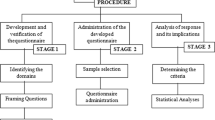Abstract
Introduction
Central auditory processing disorder (CAPD) refers to difficulties in processing audible signals not attributable to impaired hearing sensitivity or mental impairment. The demographic characteristics of pediatric CAPD and its prevalence are still debatable. Due to varied definitions and differences in the diagnostic criteria for CAPD, the approximate prevalence measure varies from 0.5 to 7% of the population. Thus, a retrospective study on prevalence in individuals with CAPD was conducted.
Method
A total of 3537 cases with ear-related problems were reported to Audiology OPD at All India Institute of Speech and Hearing from June 2017 to July 2019 between the age range of 6–18 years. Of these, 32 cases were diagnosed with CAPD, and this data was available for review.
Results
The prevalence of individuals with CAPD reported in this duration was 0.7%. The results also revealed that the prevalence was higher among males and individuals of lower socio-economic status. Their significant symptoms were poor academic performance and difficulty following commands or instructions. The data also revealed that speech perception in noise was the most affected process, followed by binaural integration in these individuals.
Conclusion
The study provides insight into the vulnerable population who can get CAPD (e.g., children and males or people from lower socio-economic backgrounds).







Similar content being viewed by others
References
ASHA (2005) Central auditory processing. ASHA 7(5):274–281
American Academy of Audiology (2010) Diagnosis, treatment and management of children and adults with central auditory processing disorder. Clin Pract Guidel. ;(August):1–51
Bellis TJ (2003) Assessment and Management of Central Auditory Processing Disorders in the Educational Setting From Science to practice. Vol. 01
Hind S, Haines-Bazrafshan R (2011) Audiology CB… journal of, 2011 undefined. Prevalence of clinical referrals having hearing thresholds within normal limits. Taylor FrancisSE Hind R Haines-Bazrafshan CL Benton W Brassington B Towle DR MooreInternational. J Audiol 2011•Taylor Francis 50(10):708–716
Dawes P, Bishop D (2009) Auditory processing disorder in relation to developmental disorders of language, communication and attention: a review and critique Research Report. Int J Lang Commun Disord 44(4):440–465
McArthur GM (2009) Auditory processing disorders: can they be treated? Curr Opin Neurol 22(2):137–143
Wilson WJ, Arnott W, Henning C (2013) A systematic review of electrophysiological outcomes following auditory training in school-age children with auditory processing deficits. Int J Audiol 52(11):721–730
Chermak G (1997) Title) FM (No, 1997 U. Central auditory processing disorders: New perspectives. cir.nii.ac.jp
Nagao K, Riegner T, Padilla J, Greenwood LA, Loson J, Zavala S et al (2016) Prevalence of auditory processing disorder in school-aged children in the mid-atlantic region. J Am Acad Audiol 27(9):691–700
Sharma M, Purdy SC, Kelly AS (2009) Comorbidity of Auditory Processing, Language, and Reading disorders. J Speech Lang Hear Res 52(3):706–722
Neijenhuis K, Snik A, van den Broek P, Neijenhuis K (2003) Auditory processing disorders in adults and children: evaluation of a test battery: Desórdenes Del procesamiento auditivo en adultos y niños; evaluación de una batería de pruebas. Int J Audiol 42(7):391–400
Muthuselvi Y (2009) Utility of the screening checklist for auditory processing (SCAP) in detecting (C) APD in children. Stud Res AIISH Mysore 7:159–175
Musiek F, Gollegly K, Lamb L, Lamb P (1990) Selected issues in screening for Central Auditory Processing Dysfunction. Semin Hear 11(04):372–383
Barrozo TF, Pagan-Neves L, de O, Vilela N, Carvallo RMM, Wertzner HF (2016) The influence of (central) auditory processing disorder in speech sound disorders. Braz J Otorhinolaryngol 82(1):56–64
Asha Y, Maggu (2013) Screening test for auditory processing. Yathiraj Maggu R 2013 screen test audit process STAP Prelim Rep. J Am Acad Audiol 249:867–878 Httpsdoiorg103766jaaa24910
Lagacé J, Jutras B, Gagné JP (2010) Auditory Processing Disorder and Speech perception problems in noise: finding the underlying origin. Am J Audiol 19(1):17–25
Keith RW (1999) Clinical issues in Central Auditory Processing disorders. Lang Speech Hear Serv Sch 30(4):339–344
Bamiou DE, Musiek FE, Luxon LM (2001) Aetiology and clinical presentations of auditory processing disorders - a review. Arch Dis Child 85(5):361–365
Acknowledgements
The authors acknowledge the Director of the All India Institute of Speech and Hearing for allowing us to carry out this study. The study is a part of the dissertation submitted to the Univerity of Mysore.
Author information
Authors and Affiliations
Contributions
Shreyas SR was involved in concept development, study design, data collection, analysis of the results, interpretation, and manuscript writing; Chandni Jain was involved in concept development and study design, questionnaire preparation, and manuscript writing.
Corresponding author
Ethics declarations
Conflict of Interest
Authors declare no conflict of interest.
Informed Consent
NA.
Additional information
Publisher’s Note
Springer Nature remains neutral with regard to jurisdictional claims in published maps and institutional affiliations.
Rights and permissions
Springer Nature or its licensor (e.g. a society or other partner) holds exclusive rights to this article under a publishing agreement with the author(s) or other rightsholder(s); author self-archiving of the accepted manuscript version of this article is solely governed by the terms of such publishing agreement and applicable law.
About this article
Cite this article
Shreyas, S.R., Jain, C. Two-year Prevalence of Central Auditory Processing Disorders in Children. Indian J Otolaryngol Head Neck Surg (2024). https://doi.org/10.1007/s12070-024-04673-0
Received:
Accepted:
Published:
DOI: https://doi.org/10.1007/s12070-024-04673-0




